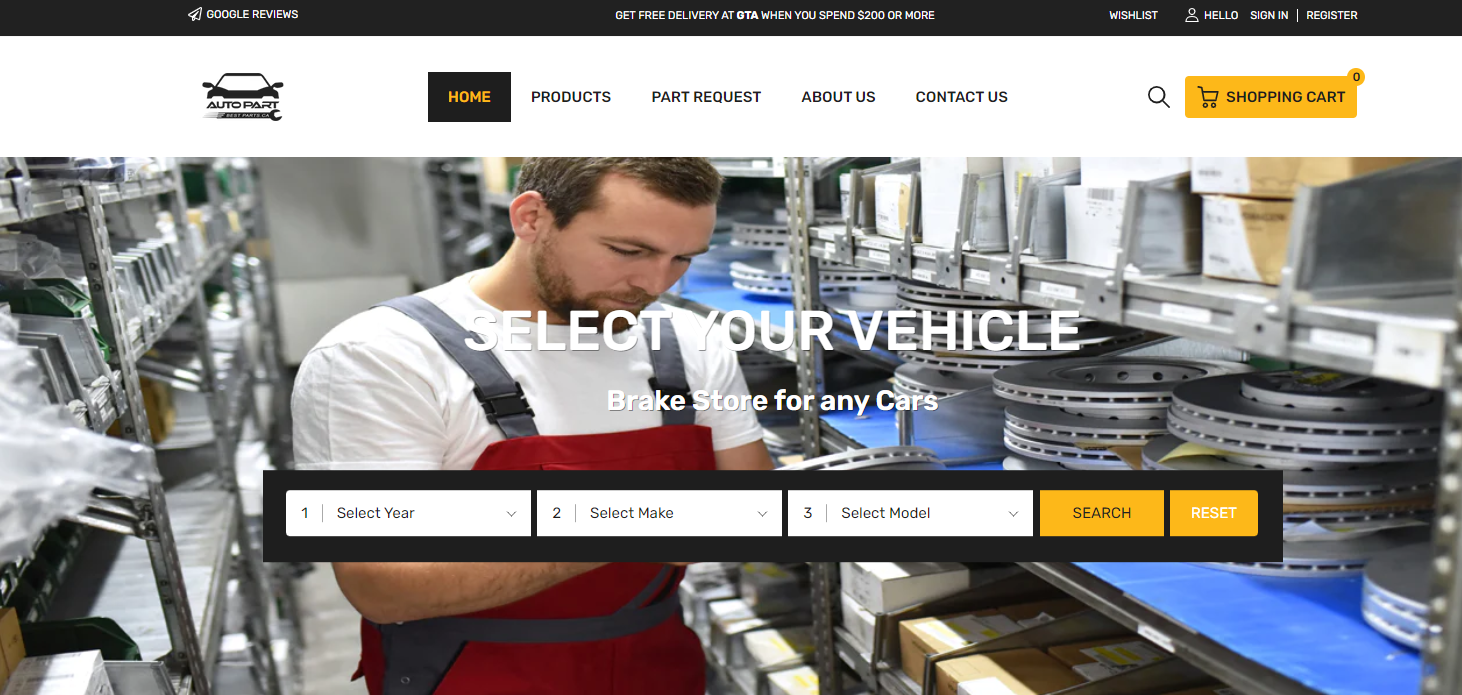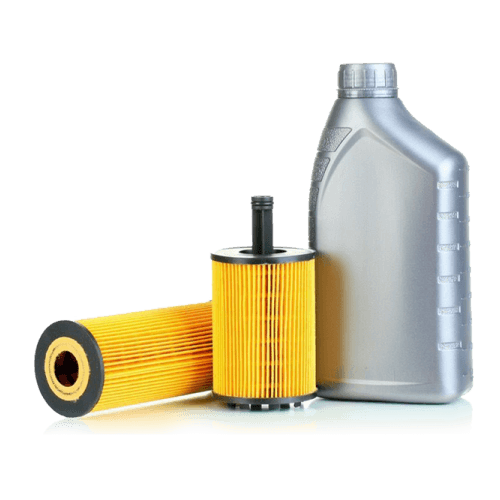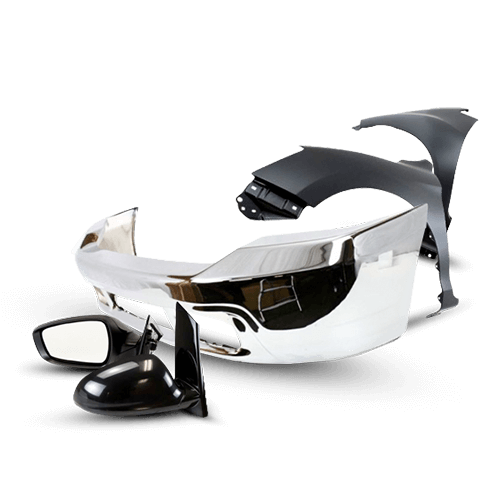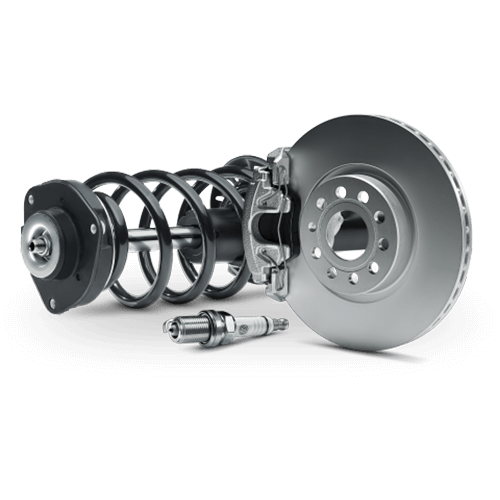
Brake Pads and Rotors Replacement Cost - Complete Cost Breakdown
Key Takeaway
- Brake pads and rotors replacement cost in Canada typically ranges from $300 to $800 per axle, with front brakes generally costing more than rear brakes
- Vehicle type, brake quality, and labor rates significantly impact total replacement costs
- Premium vehicles like BMW and Audi have higher replacement costs due to specialized components and labor requirements
- DIY installation can save 40-60% on labor costs, but requires proper tools and mechanical knowledge
- Regular brake inspections help catch issues early and prevent costly emergency replacements
Introduction
The brake pads and rotors replacement cost represents one of the most common maintenance expenses for Canadian vehicle owners. Understanding what influences this cost helps you budget appropriately and make informed decisions about your vehicle's safety and performance. Whether you drive a Toyota RAV4, Audi Q5, or any other vehicle, knowing the expected costs for brake service allows you to plan maintenance schedules and avoid unexpected repair bills. This comprehensive guide breaks down all factors affecting brake replacement costs in Canada, providing you with the knowledge to maintain your vehicle's braking system effectively while managing expenses.
What Determines Brake Pads and Rotors Replacement Cost
Several key factors influence the total cost of brake pads and rotors replacement for your vehicle. The type and quality of brake components represent the primary cost variable, with options ranging from economy to premium performance parts. Ceramic brake pads typically cost more than semi-metallic or organic pads, but they offer superior performance and longevity. Rotor quality also varies significantly, with options including standard cast iron, drilled, slotted, or drilled-and-slotted performance rotors.
Vehicle make and model heavily impact replacement costs because different vehicles require specific brake component sizes and designs. A compact sedan uses smaller, less expensive brake components compared to a full-size truck or luxury SUV. Labor rates constitute another significant portion of total costs, varying by geographic location, shop type, and service complexity. Dealership service centers generally charge higher labor rates than independent repair shops, though they may offer specialized expertise for specific vehicle brands.
The condition of related brake system components affects overall costs as well. If brake calipers, hardware, or hydraulic lines need replacement during brake service, total expenses increase accordingly. Additionally, whether you replace components on one axle or both axles simultaneously impacts the final bill. Many mechanics recommend replacing brake components in axle sets to maintain balanced braking performance and avoid premature wear on newer components.

Average Brake Replacement Costs in Canada
Understanding typical brake pads and rotors replacement cost Canada figures helps you evaluate service quotes and budget for maintenance. For most passenger vehicles, front brake pad replacement alone ranges from $150 to $300 per axle, while adding rotor replacement increases costs to $300 to $600 per axle. These figures include both parts and labor for standard-quality components installed at independent repair shops.
Rear brake service generally costs slightly less than front brake replacement because rear brakes typically wear more slowly and use smaller components. The rear brake pads and rotors replacement cost typically ranges from $250 to $500 per axle, depending on vehicle type and component quality. Some vehicles use drum brakes on the rear axle, which require different service procedures and costs compared to disc brake systems.
When replacing both front and rear brakes simultaneously, total costs typically range from $600 to $1,200 for standard passenger vehicles using quality aftermarket components. Premium or performance brake components can increase these costs by 50-100%, while economy parts may reduce costs by 20-30%. Labor charges in Canadian markets typically range from $80 to $150 per hour, with brake replacement requiring approximately 1.5 to 3 hours depending on vehicle complexity and whether additional services like brake fluid flushing are performed.
Front Brake Pads and Rotors Replacement Cost
The front brake pads and rotors replacement cost exceeds rear brake expenses for most vehicles because front brakes handle 60-70% of braking force. This increased workload requires larger, more robust components that cost more to manufacture and install. For typical passenger cars and crossovers, expect to pay $300 to $600 per axle for quality aftermarket brake components with professional installation.
Front brake rotors typically measure larger in diameter and thickness compared to rear rotors, contributing to higher component costs. Quality front brake pads range from $40 to $100 per axle for ceramic or semi-metallic compounds, while front rotors cost between $60 and $150 each depending on vehicle specifications and quality level. Performance vehicles or those with larger brake systems may require components costing $200-400 per rotor.
Professional installation for front brake replacement typically requires 1.5 to 2 hours of labor, translating to $120 to $300 in labor charges depending on shop rates and vehicle complexity. Some vehicles with complex electronic brake systems or tight engine bay clearances require additional labor time, increasing total costs. Premium brake component brands like Brembo, Bosch, or Textar offer superior performance and longevity, justifying their higher price points for drivers prioritizing safety and quality.
Vehicle-Specific Brake Replacement Costs
Different vehicle makes and models have varying brake replacement expenses based on their specific designs and component requirements. Understanding costs for your particular vehicle helps you budget appropriately and compare service quotes effectively. The following breakdowns provide realistic cost expectations for popular vehicles in the Canadian market.
Toyota RAV4 Brake Replacement Cost
The Toyota RAV4 brake pads and rotors replacement cost typically ranges from $350 to $550 per axle for quality aftermarket components with professional installation. Toyota vehicles generally use straightforward brake designs that keep labor costs reasonable while maintaining reliable performance standards. Front brake service for the RAV4 usually costs between $380 and $550, while rear brake replacement ranges from $320 to $480 per axle.
RAV4 owners benefit from widely available aftermarket brake components that offer excellent value compared to OEM parts. Quality ceramic brake pads designed for the RAV4 cost approximately $50-80 per axle, while rotors range from $60-100 each depending on quality level. The RAV4's brake system accessibility allows most shops to complete brake replacement in under two hours, keeping labor costs moderate. Many Canadian parts suppliers stock brake components specifically compatible with Toyota vehicles, making it easy to find quality parts at competitive prices.
Honda CRV Brake Replacement Cost
The Honda CRV brake pads and rotors replacement cost falls within the $350 to $600 range per axle, reflecting the vehicle's popular midsize crossover category where component costs remain moderate while maintaining reliable performance standards. Honda's engineering focuses on durability and ease of maintenance, which translates to reasonable service costs for brake system repairs and replacement.
Front brake service for the Honda CRV typically costs between $380 and $600 per axle when using quality aftermarket components, while rear brake replacement ranges from $320 to $520. The CRV uses disc brakes on all four wheels in most model years, ensuring consistent braking performance and predictable replacement costs. Honda's widespread popularity in Canada means abundant parts availability and competitive pricing from multiple suppliers. Shops familiar with Honda vehicles can efficiently complete brake replacement, minimizing labor charges while ensuring proper installation.
Mazda 3 Brake Replacement Cost
The Mazda 3 brake pads and rotors replacement cost typically ranges from $300 to $500 per axle, making it one of the more affordable vehicles for brake maintenance. The compact sedan design uses appropriately sized brake components that balance performance with cost-effectiveness. Mazda 3 front brake replacement generally costs between $320 and $500 per axle, while rear brake service ranges from $280 to $450.
Japanese compact vehicles like the Mazda 3 benefit from excellent aftermarket parts availability and straightforward brake system designs that reduce labor time and complexity. Quality brake pads for the Mazda 3 cost approximately $40-70 per axle, while rotors range from $50-90 each depending on specifications. The vehicle's lightweight design and efficient brake system often allow brake components to last longer than heavier vehicles, reducing the frequency of replacement and overall lifetime maintenance costs. Many shops offer competitive pricing for Mazda brake service due to the vehicle's popularity and ease of maintenance.
Mazda CX-5 Brake Replacement Cost
The Mazda CX-5 brake pads and rotors replacement cost runs slightly higher at $350 to $600 per axle due to its larger size and weight compared to the Mazda 3 sedan. As a compact crossover SUV, the CX-5 requires more robust brake components to handle increased vehicle mass and potential cargo loads. Front brake replacement typically costs between $380 and $600 per axle, while rear service ranges from $320 to $550.
The CX-5 shares many mechanical components with other Mazda vehicles, providing good parts availability and competitive pricing in the Canadian aftermarket. Brake component quality significantly affects longevity in crossover vehicles that may see varied driving conditions including highway cruising, city traffic, and occasional light off-road use. Investing in quality ceramic brake pads and premium rotors helps maximize service life and maintain consistent braking performance. The CX-5's brake system accessibility allows efficient service, with most shops completing brake replacement in approximately two hours for standard procedures.
Audi Q5 Brake Replacement Cost
The Audi Q5 brake pads and rotors replacement cost typically exceeds mainstream vehicle expenses, ranging from $500 to $900 per axle when using OEM or premium aftermarket components. German luxury vehicles often require specialized brake components engineered to precise specifications, increasing both parts and labor costs. Front brake service for the Q5 generally costs between $550 and $900 per axle, while rear brake replacement ranges from $480 to $800.
Audi vehicles feature sophisticated brake systems with electronic monitoring and integration with stability control systems, requiring proper diagnostic tools and expertise for service. Labor costs increase due to the technical knowledge required and additional time needed for proper installation and system calibration. While quality aftermarket brake components from European manufacturers like ATE, Bosch, or TRW cost less than Audi OEM parts, they still command premium pricing compared to components for mainstream vehicles. Q5 owners should prioritize component quality and proper installation to maintain the vehicle's sophisticated braking performance and safety systems.

BMW Brake Replacement Cost
The BMW brake pads and rotors replacement cost follows similar patterns to other German luxury vehicles, with owners typically spending $600 to $1,000 per axle for quality brake service at independent shops specializing in European vehicles. Dealership service costs often exceed these figures by 30-50%, though some owners prefer dealer service for complex brake system integration and warranty considerations.
BMW brake systems feature high-performance components designed to deliver exceptional stopping power while managing heat dissipation during spirited driving. These engineering requirements result in brake components that cost significantly more than those for mainstream vehicles. Front brake service for most BMW models ranges from $650 to $1,000 per axle, while rear service typically costs $550 to $900. Performance-oriented BMW models with larger brake packages or carbon-ceramic brakes command even higher replacement costs.
European aftermarket manufacturers produce excellent brake components specifically engineered for BMW vehicles, offering performance comparable to OEM parts at reduced costs. Brands like Zimmermann, Textar, or Brembo manufacture brake components meeting BMW specifications while providing better value than dealer parts. BMW owners should ensure their service provider has experience with German vehicles and proper diagnostic equipment to maintain brake system integration with electronic stability and driver assistance systems.

Understanding Parts Quality and Pricing
The quality level of brake components significantly affects both initial rotors and brake pads replacement cost and long-term value. Economy brake pads may cost $30-50 per axle but typically last only 25,000-35,000 kilometers, while premium ceramic pads costing $80-120 per axle often provide 50,000-70,000 kilometers of service life. This difference in longevity means premium pads may actually cost less per kilometer driven despite higher upfront expenses.
Canadian vehicle owners can find quality brake components through various sources, including automotive parts retailers, online suppliers, and repair shops. Shopping for brake pads and brake rotors separately allows you to compare prices and choose components that match your performance needs and budget. Many retailers offer complete brake kits that include matched pads and rotors for both front or rear axles, often at package pricing that saves money compared to purchasing components individually.
Performance-oriented drivers may choose upgraded brake components like drilled and slotted brake rotors that provide enhanced heat dissipation and wet-weather performance. While these premium rotors cost 30-50% more than standard cast iron rotors, they deliver measurably better braking performance under demanding conditions. Pairing quality rotors with premium brake pads from manufacturers like Akebono or Wagner ensures optimal braking system performance and longevity.
DIY Installation vs Professional Service
Choosing between professional installation and do-it-yourself brake replacement significantly impacts your total brake rotors and pads replacement cost. Professional installation provides expertise, proper tools, and warranty coverage, but labor charges typically represent 40-60% of total brake replacement costs. For a standard brake job costing $500 installed, labor might account for $200-300 of that total.
Mechanically inclined vehicle owners can save substantial money through DIY installation, purchasing quality components from sources offering discount brakes or cheap brake rotors and pads Canada options. However, brake replacement requires specific tools including a jack and jack stands, socket set, torque wrench, brake caliper tool, and potentially specialty tools for specific vehicles. The initial tool investment may cost $150-300, but these tools remain useful for future maintenance and repairs.
Safety represents the paramount consideration when deciding between DIY and professional brake service. Improperly installed brake components can result in brake failure, creating dangerous driving conditions and potential liability issues. If you lack mechanical experience or feel uncertain about any aspect of brake replacement, professional installation provides peace of mind and ensures work meets safety standards. Many shops also provide warranties on both parts and labor, protecting you from potential defects or installation issues.
How to Reduce Brake Replacement Expenses
Several strategies help minimize your brake pads and rotors replacement cost without compromising safety or quality. First, address brake issues promptly when they arise rather than delaying service. Worn brake pads that contact rotors with metal backing plates cause rotor damage requiring replacement, turning a $150 pad replacement into a $400 pad and rotor replacement. Regular brake inspections catch wear early, allowing you to replace only the necessary components.
Shopping for quality aftermarket components rather than OEM parts reduces costs by 30-50% while maintaining comparable performance and reliability. Reputable aftermarket brands like TRW, Delphi, or ATE manufacture brake components meeting or exceeding OEM specifications at lower prices. These established manufacturers supply brake components to multiple vehicle brands, leveraging economies of scale that reduce consumer costs.
Consider purchasing complete brake kits that bundle pads, rotors, and hardware together at package pricing. Many retailers offer front or rear axle kits at discounted rates compared to buying components separately. Additionally, timing brake replacement with seasonal sales or promotional periods can yield significant savings. Some shops offer brake service specials during slower business periods, providing quality service at reduced rates. However, never compromise on brake component quality or installation expertise solely to achieve the lowest possible price, as brake system performance directly affects vehicle safety.

Maintenance Practices That Extend Brake Life
Proper vehicle operation and regular maintenance extend brake component life, reducing the frequency and overall cost of brake pads and rotors replacement over your vehicle's lifetime. Smooth, progressive braking rather than aggressive stops reduces brake wear and heat generation that degrades components. Maintaining proper following distance allows gentler braking and extends component life by thousands of kilometers.
Regular brake system inspections allow early detection of worn components before they cause damage to other brake system parts. Annual inspections during routine maintenance appointments catch worn brake pads before metal-to-metal contact damages rotors, preventing unnecessary replacement expenses. Many shops include basic brake inspections with oil changes or other routine services, providing no-cost visibility into brake system condition.
Maintaining proper brake fluid condition also protects brake system components from corrosion and ensures optimal hydraulic pressure transmission. Brake fluid absorbs moisture over time, reducing its boiling point and allowing internal brake system corrosion. Flushing and replacing brake fluid every two years prevents moisture-related damage and maintains consistent brake pedal feel. This relatively inexpensive maintenance task protects expensive brake calipers and hydraulic components from premature failure, avoiding costs that far exceed the fluid service expense.
Recognizing When Brake Replacement Is Necessary
Understanding symptoms indicating necessary brake replacement helps you address issues promptly and avoid safety hazards or additional damage. Squealing or grinding noises during braking represent the most obvious brake wear indicators, with squealing typically caused by wear indicators contacting rotors and grinding indicating metal-to-metal contact between worn pad backing plates and rotors. Grinding requires immediate attention as it damages rotors and potentially calipers.
Vibration or pulsation felt through the brake pedal during braking often indicates warped rotors requiring replacement or resurfacing. Rotor warping results from repeated severe braking that generates excessive heat, or from improper installation procedures that create uneven clamping pressure. Pulling to one side during braking may indicate uneven pad wear, seized caliper components, or contaminated brake pads requiring diagnosis and repair.
Visual inspection provides direct assessment of brake component condition for accessible brake systems. Brake pads with less than 3-4 millimeters of friction material remaining require replacement soon, while pads with 2 millimeters or less need immediate replacement. Rotors showing deep grooves, heavy rust, or blue discoloration from overheating typically require replacement rather than resurfacing. When any of these symptoms appear, prompt professional evaluation determines necessary repairs and provides accurate cost estimates for needed services.
Frequently Asked Questions
How much does it cost to replace brake pads and rotors in Canada?
The typical brake pads and rotors replacement cost in Canada ranges from $300 to $600 per axle for standard vehicles using quality aftermarket parts. Premium vehicles and high-performance components can increase costs to $800-1,000 per axle. Geographic location and shop type also influence final pricing.
Should I replace all four brake pads and rotors at once?
Replacing brake components by axle (front or rear) maintains balanced braking performance, but simultaneous four-wheel replacement isn't always necessary. Front brakes typically wear faster than rear brakes, so front replacement often occurs 1-2 times before rear service is needed. Your mechanic can assess individual component condition to recommend appropriate service.
How long do brake pads and rotors typically last?
Quality brake pads typically last 40,000-70,000 kilometers depending on driving conditions and habits, while rotors often last through two or three pad replacements before requiring replacement. Severe driving conditions, frequent towing, or aggressive braking reduces component life significantly. Regular inspections determine actual component condition regardless of mileage.
Can I replace brake pads without replacing rotors?
Yes, brake pads can be replaced without rotor replacement if rotors meet minimum thickness specifications and show no warping, deep grooves, or damage. However, resurfacing rotors during pad replacement ensures optimal pad contact and brake performance. Your mechanic measures rotor thickness and condition to determine if replacement is necessary.
What's the difference between front and rear brake replacement costs?
Front brake pads and rotors replacement cost typically exceeds rear brake expenses by $50-150 per axle because front brakes use larger components and handle greater braking force. Front brakes also require more frequent replacement due to higher wear rates. The specific cost difference depends on vehicle type and component quality chosen.
Are OEM brake parts worth the extra cost?
Quality aftermarket brake components from established manufacturers provide comparable performance to OEM parts at 30-50% lower costs, making them excellent value for most drivers. OEM parts ensure exact factory specifications and may include longer warranties, but reputable aftermarket brands like those from brake specialists offer proven reliability. Choose based on your performance needs and budget priorities























































